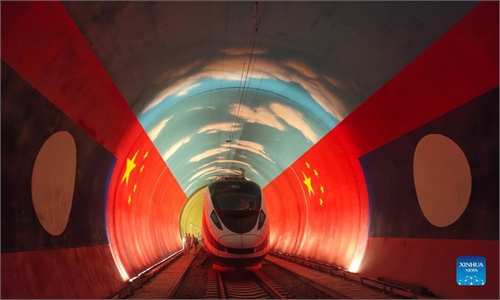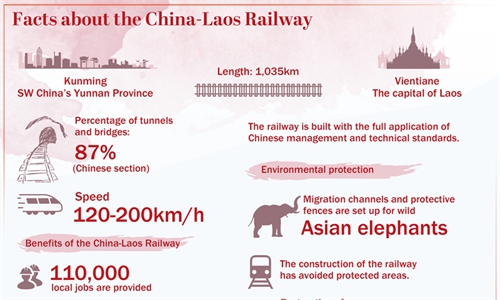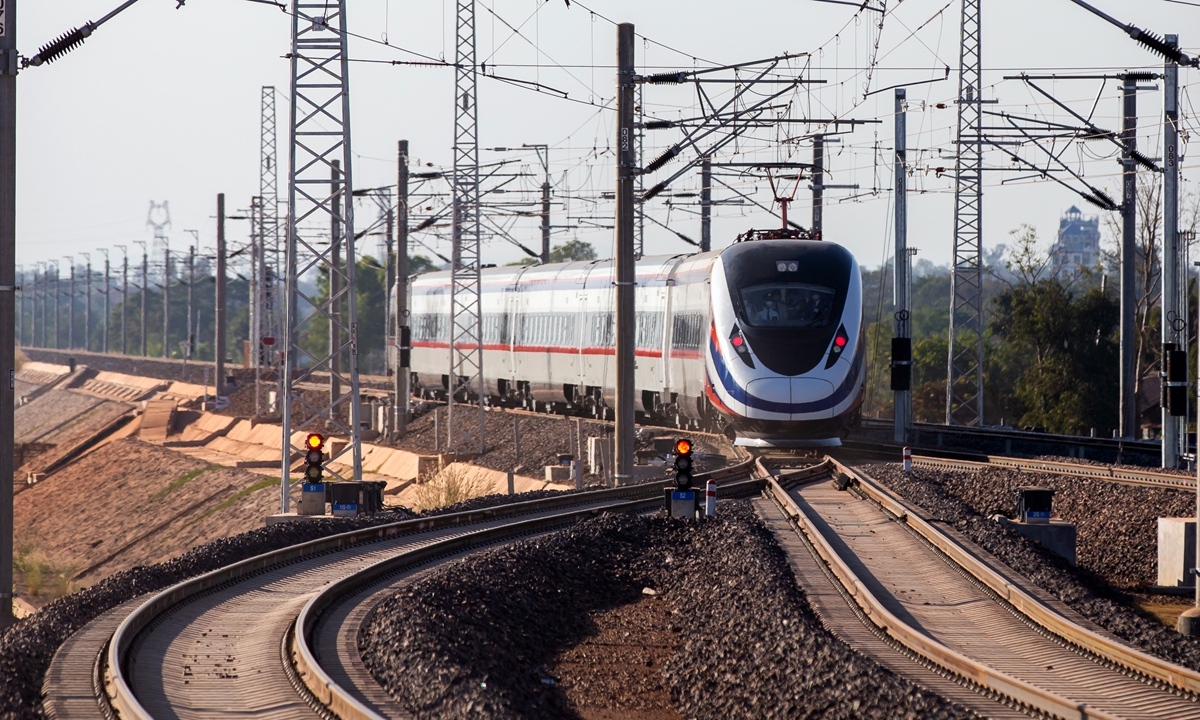
The Lane Xang EMU train departs the China-Laos Railway Vientiane station in the Lao capital Vientiane on December 3, 2021. Photo: Xinhua
On the night before the official launch of the China-Laos Railway, a landmark project under the Belt and Road Initiative (BRI), La THOR, a 23-year-old born in Laos' Luang Prabang and who has studied for two years at a Shanghai university, could not help remembering the months he had spent taking part in the project.In December 2020, La THOR started a nearly one-year long graduation internship at the construction site along the China-Laos Railway, carrying out a number of tasks from laying track to setting railway markers under the guidance of project managers.
"I helped lay the tracks from Luang Prabang to Boten station on the Chinese border, as well as laying kilometer and 100-meter markers," he told the Global Times. "I am very excited about the railway's operation."
La THOR is one of the 31 Laos students that came to China to study rail operations at the Shanghai Institute of Technology under a college exchange program it launched along with Laos' Souphanouvong University. The Shanghai People's Association for Friendship with Foreign Countries aided the program.
So far, nine students including La THOR have graduated and have been hired by the Laos-China Railway Co, becoming Laos' first group of railway technicians who hold a bachelor degree.
This is also a reflection of the BRI projects' flywheel effects, as they can not only stimulate trade or economic cooperation via infrastructure connections, but could also pave the way for academic, technical cooperation as well as talent exchanges.
On Friday, the China-Laos Railway, which connects Kunming in Southwest China's Yunnan Province with Lao capital Vientiane, officially entered operation. It is the first railway project built with Chinese investment, jointly operated by China and Laos and directly connected to China's railway network. Before this railway was completed, Laos had only a 3.5-kilometer stretch of track connected to Thailand.
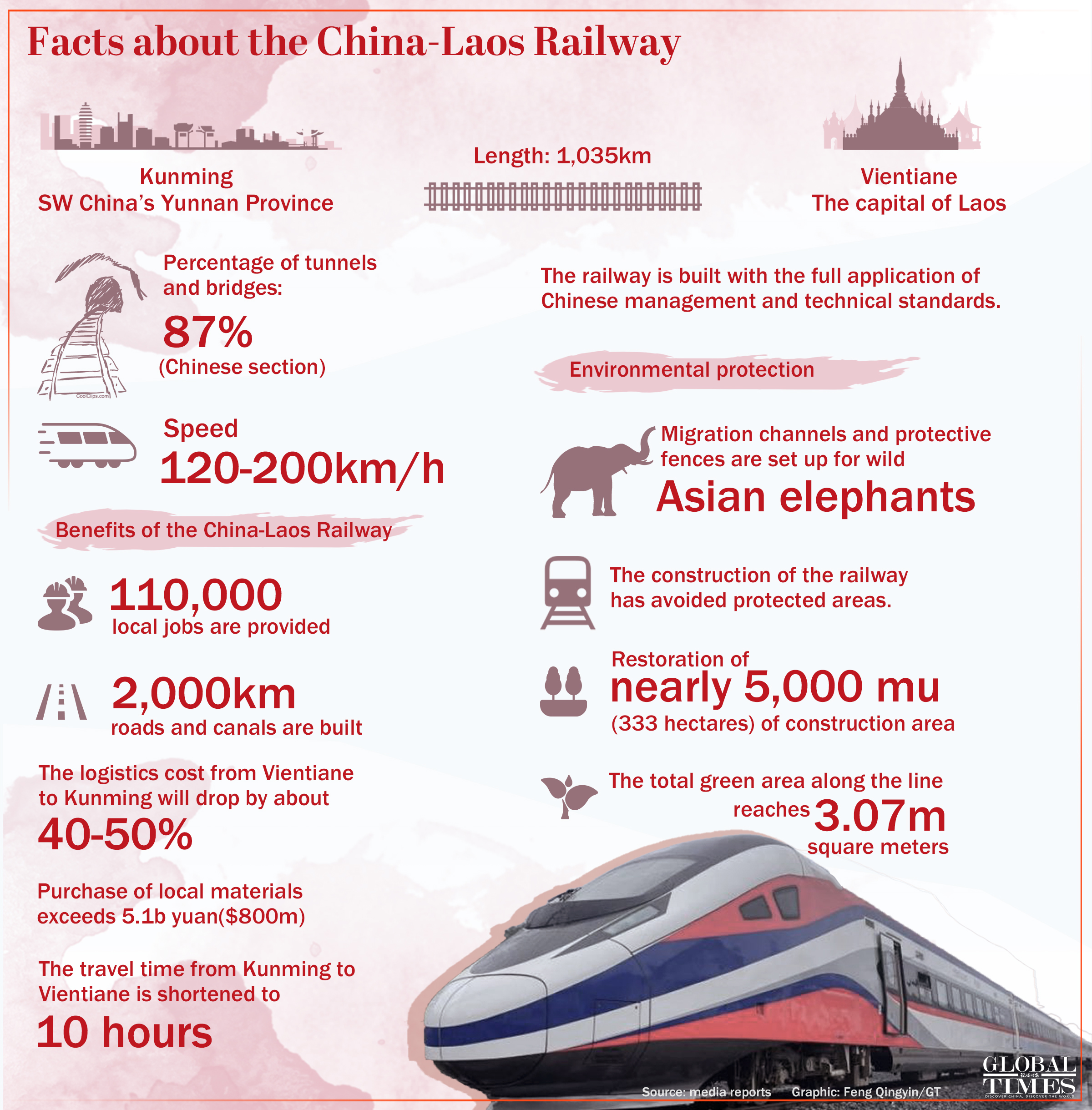
Facts about the China-Laos railway. Graphic: Feng Qingyin/GT
Talent exchange
Several students who took part in the aforementioned program told the Global Times that they had benefited from the China-Laos academic cooperation that allowed them to acquire railway knowledge and contribute to joint projects.
Likhamsoukyiaseng Tong, a 24-year-old Laos student who is now still studying at the Shanghai Institute of Technology, told the Global Times that one difference between Chinese and Laos education is that Chinese colleges have more doctorates, and that the courses taught in Chinese colleges, like advanced mathematics, are more difficult compared with those taught in his homeland.
"I live in a region in Laos that is very close to China's Xishuangbanna, and I've seen a lot of my relatives and friends travel to China to pursue education, which inspires me to take the same path," he said.
Sou XONG, a 23-year-old student who took part in the education program, also said he is happy about having the chance to study railway engineering in China.
He mentioned the thrill he had when he took a Fuxing high-speed bullet train in 2019, when he excitedly stood up and took in the scenery along the route.
The students also told the Global Times that they see the China-Laos Railway project as one that generates a lot of benefit to the local economy.
La THOR, for example, said that the railway would speed up transportation. He said that in the past, it took about a dozen hours to travel from Vientiane to Luang Prabang by road, and now it takes only 1-2 hours. "I figure the changes are significant."
Li Wenju, Secretary of Party General Branch at the School of Railway Transportation under the Shanghai Institute of Technology, said Thursday that apart from cooperating with Laos to nurture talent for the railway, the university would also carry out education cooperative programs in partnership with other countries in the Lancang-Mekong region, such as Myanmar and Thailand, in the future.
Li Peigang, head of the department of railway engineering at the School of Railway Transportation under the Shanghai Institute of Technology, also explained that the school will expand enrollment from overseas countries, as well as pushing training programs for those countries' railway staff.
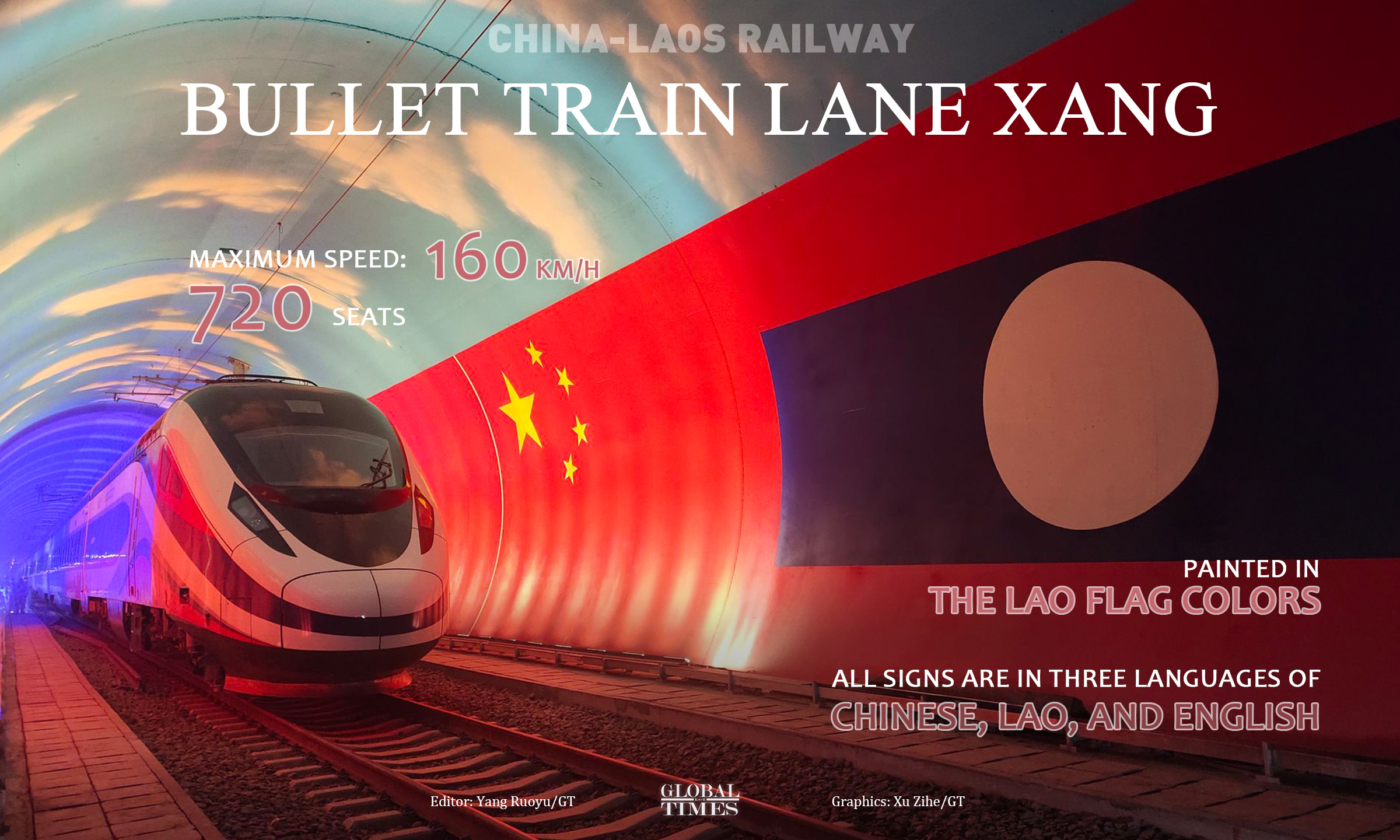
Architecture miracles in China-Laos Railway. Graphic: Xu Zihe/GT
Technology cooperation
Apart from education and talent exchange, China is also launching partnership with Laos targeting technological research.
On Saturday, the Shanghai Institute of Technology unveiled an international joint laboratory on the China-Laos railway project. The laboratory will focus on a range of research areas including China-Laos railway risk vectors and distribution characteristics.
Li Peigang told the Global Times that while Laos is still developing its basic research capacity, China and Laos have significant room in advancing joint research such as in long-term inspection of geology areas, data analysis and rainy season safety monitoring.
"One point of cooperation is how we can use China's BeiDou Satellite Navigation System in overseas railways. We can study how to connect Laos' internet network with our railway infrastructure, and how to use BeiDou in areas like data transmit and landslide monitoring," Li said.
Experts also noted that the China-Laos Railway project is an example of how BRI project can foster wider cooperation apart from economic interaction in regional areas.
"For example, as far as the China-Laos Railway project is concerned, as Laos has abundant agricultural and wood resources, the project will boost China-Laos dialogue in these areas, while language learning and cultural communication will also benefit as a result of the project," Gu Xiaosong, dean of the ASEAN Research Institute of Hainan Tropical Ocean University, told the Global Times.
He also noted that China will also increase people-to-people and cultural communication with other countries in the Lancang-Mekong region such as Thailand using rail.

